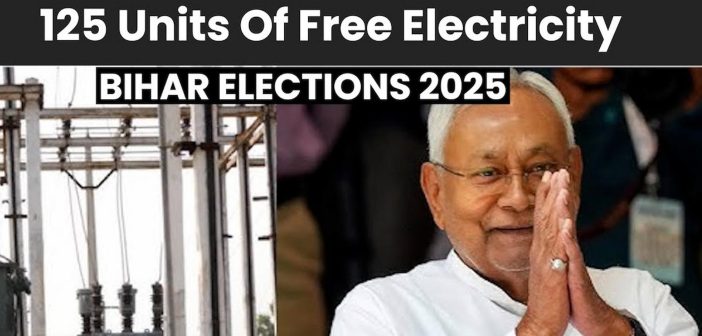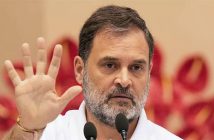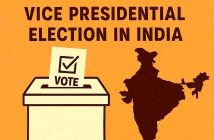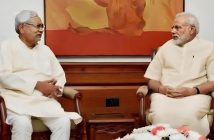In a bold move ahead of the Bihar Assembly elections 2025, Chief Minister Nitish Kumar has unveiled a game-changing promise: free electricity up to 125 units for all domestic consumers starting August 1. This Bihar elections 2025 promise aims to ease financial burdens for 1.67 crore families. But will this sway voters, or is it a desperate poll ploy? As opposition parties cry foul and citizens weigh the benefits, the stage is set for a heated electoral battle. Can Nitish’s free power scheme light up his re-election chances?
Patna: Bihar Chief Minister Nitish Kumar has ignited the 2025 Bihar Assembly elections with a significant announcement: free electricity up to 125 units for all domestic consumers, starting August 1, 2025. Shared via a post on X, this Bihar elections 2025 promise is set to benefit 1.67 crore households, offering relief amid rising costs. Timed strategically before the October-November polls, the move is seen as a bid to woo rural and low-income voters. Nitish also pledged to install solar panels across households, aiming for 10,000 MW of solar energy by 2028. However, opposition parties, including RJD and Congress, have slammed it as a “copycat” tactic. As the Bihar elections 2025 promise to heat up, this scheme could reshape voter sentiment, but will it counter growing concerns over governance and security?
The Free Electricity Announcement
On July 17, 2025, Bihar Chief Minister Nitish Kumar announced that all domestic consumers would receive 125 units of free electricity per month, effective from August 1, 2025. This benefit will reflect in July’s billing cycle. The scheme targets 1.67 crore households out of Bihar’s 1.87 crore domestic consumers. Nitish emphasized that the state has long provided affordable electricity. He stated, “We have decided that from August 1, 2025, no charges will be levied for up to 125 units.” This move aligns with his government’s push for sustainable energy, including plans to install solar panels on rooftops or public spaces within three years, targeting 10,000 MW of solar power.
Political Strategy Behind the Move
The announcement is a calculated move by Nitish Kumar’s Janata Dal (United) (JD(U)) to strengthen its position ahead of the 2025 Bihar Assembly elections. With polls slated for late 2025, the Bihar elections 2025 promise aims to appeal to rural and middle-class voters. The JD(U)-led National Democratic Alliance (NDA) hails it as a “historic” decision. Deputy Chief Minister Samrat Chaudhary described it as a “golden day” for Bihar’s 1.67 crore families who use less than 125 units of electricity per month. JD(U) MP Sanjay Kumar Jha added that every household will be connected to solar energy by 2028, framing it as a pro-poor initiative. This follows Nitish’s earlier pledge of one crore jobs, signaling a broader welfare push to counter opposition narratives.
Who Benefits from the Scheme?
The free electricity scheme targets all domestic consumers, particularly benefiting rural households and the urban poor. Of Bihar’s 1.87 crore domestic consumers, 1.67 crore use up to 125 units of electricity per month. This includes small households, low-income families, and those under the Kutir Jyoti Yojana, which supports impoverished families. The government will fully fund S for these families, while others will receive a 50% subsidy. Farmers, though not directly mentioned, may benefit indirectly through reduced household costs. This broad reach makes the scheme a significant promise for Bihar elections 2025, addressing the economic pressures faced by millions.
Comparison with Past Power Subsidies
Bihar has a history of electricity subsidies, but this scheme marks a bold escalation. Previously, the state offered subsidized rates under the Har Ghar Bijli Yojana, ensuring 100% electrification of households. Nitish’s government has long claimed to provide electricity at lower rates than other states. However, the new policy of 125 units free is unprecedented in scale. Unlike earlier subsidies that reduced tariffs, this fully waives charges for low-usage households. The solar push also builds on past renewable energy initiatives, like the 2019 solar village projects, but with a more ambitious timeline and scale. This shift reflects Nitish’s focus on sustainability alongside affordability.
Opposition’s Sharp Criticism
The opposition has fiercely criticized Nitish’s announcement, labeling it a pre-election gimmick. The Rashtriya Janata Dal (RJD), led by Tejashwi Yadav, accused Nitish of copying their promise of 200 units of free electricity. RJD spokesperson Mrityunjay Tiwari called Nitish a “copycat CM,” arguing the scheme lacks originality. Congress leader Udit Raj questioned why such a decision had not been made during Nitish’s 20-year tenure, suggesting that electoral pressure from the RJD and Congress had forced his hand. The Left parties echoed similar sentiments, alleging the move distracts from governance failures, including rising crime. The opposition’s critique ties into broader controversies, such as the SIR controversy during the 2025 parliamentary session, where the NDA’s policies faced scrutiny.
Public Sentiment: Hope and Skepticism
Public reactions to the free electricity scheme are mixed. Many citizens, especially in rural areas, welcome the relief amid rising electricity costs. A Patna shopkeeper, Rajesh Kumar, said, “This will save us hundreds of rupees monthly.” However, skepticism persists. Some urban residents doubt the scheme’s implementation, citing past delays in the rollout of subsidies. Social media posts on X reflect this divide, with some praising Nitish’s pro-poor move, while others question its timing. One user wrote, “Nitish opposed free electricity last year. Why now?” Economic pressures, including inflation, make promises like these in the Bihar elections 2025 highly relevant, but trust in delivery remains a hurdle.
Impact on Bihar Elections 2025
The free electricity scheme could significantly impact voter dynamics in the 2025 Bihar Assembly elections. Rural voters, who form a significant voting bloc, are likely to view this as a direct financial benefit. The promise appeals to low-income groups, a key demographic for both NDA and the opposition’s INDIA bloc. However, the opposition’s narrative of “copycat” governance and rising crime, highlighted during the 2025 parliamentary session, could dilute its impact. The Sindoor row opposition protest, where the RJD criticized cultural insensitivities, adds to the political heat. Analysts suggest that while the scheme strengthens JD(U) ‘s welfare image, its success depends on swift implementation and addressing security concerns.
Solar Power: A Long-Term Vision
Beyond free electricity, Nitish’s plan to install solar panels across households signals a commitment to sustainability. The government aims to generate 10,000 MW of solar energy by 2028. For low-income families participating in the Kutir Jyoti Yojana, the state will cover the full installation costs. Others will receive subsidies, making solar accessible to more households. This aligns with Bihar’s push for renewable energy, potentially reducing dependency on traditional power grids. However, logistical challenges, like securing consumer consent and infrastructure, could delay progress. This dual focus on immediate relief and long-term energy solutions strengthens Nitish’s electoral pitch.
Challenges and Risks
Implementing the scheme poses challenges. Bihar’s power distribution companies already face financial strain, and waiving charges for 1.67 crore households could put a strain on state finances. Deputy CM Samrat Chaudhary claimed there would be “no revenue reduction,” but experts question this optimism. Past schemes, such as pension hikes, have faced delays due to funding issues. Additionally, the opposition’s focus on governance failures, including the crime surge highlighted in the SIR controversy and the 2025 parliamentary session, could overshadow the scheme’s appeal. Nitish must ensure timely delivery to maintain voter trust, especially with elections looming.
Broader Electoral Context
The announcement of free electricity is part of a broader welfare push by Nitish’s government. Recent promises include tripling social security pensions to Rs 1,100 for 1.1 crore beneficiaries and creating one crore jobs. These moves aim to counter opposition campaigns, particularly the RJD’s focus on unemployment and crime. The Sindoor row opposition protest, where the RJD accused the NDA of cultural missteps, adds another layer of tension. As the Bihar Assembly elections 2025 approach, Nitish’s ability to balance welfare promises with governance critiques will be crucial. The free power scheme could be a game-changer, but only if voters see tangible results.
Conclusion
Nitish Kumar’s announcement of 125 units of free electricity is a bold promise for the 2025 Bihar elections, targeting 1.67 crore households. Coupled with a push for solar power, it aims to win over rural and low-income voters. However, opposition criticism, governance challenges, and implementation hurdles loom large. While the scheme offers financial relief, its success hinges on timely execution and addressing public skepticism. As Bihar gears up for the 2025 polls, Nitish’s welfare strategy could reshape electoral dynamics, but only if it overcomes the shadow of past promises and current controversies.
Share your thoughts on Nitish Kumar’s free electricity scheme in the comments below!




